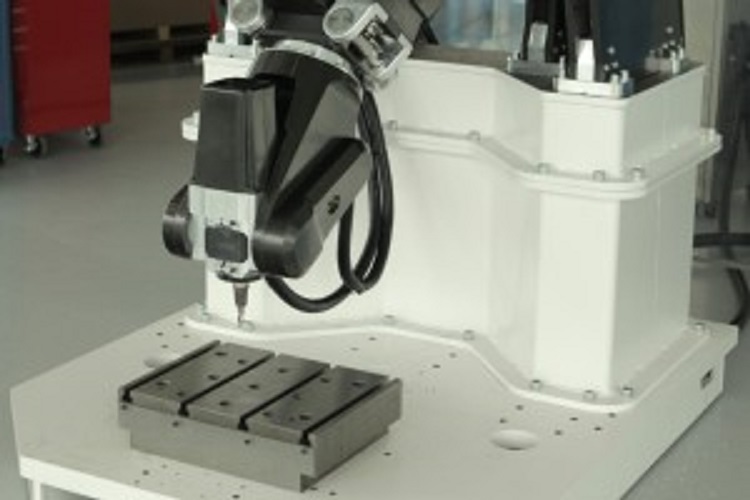
Machining, composite and integrated manufacturing specialists at the University of Sheffield Advanced Manufacturing Research Centre (AMRC) have built what is said to be the world’s first reconfigurable carbon composite robotic machine tool.
The carbon composite robot project is part of the AMRC’s contribution to the Factory of the Aircraft Future project, backed by the Aerospace Technology Institute, which was established by the government and aerospace industry to sustain and grow an internationally competitive UK aerospace sector. The project brings together aerospace giant Airbus and system manufacturer Exechon who specialises in Parallel Kinematic Robots, to develop a new light weight and modular version manufactured and tested by AMRC.
Most robots in industry today use serial linkage technology, where each additional axis is mounted on the previous one, with an end effector, which holds the tools the robot uses, on the final axis. Parallel Kinematic Robots have the end effector mounted between two or more independently moveable arms, allowing movements in the in X, Y and Z directions to be made using three or more parallel axes.
According to the organization, Parallel Kinematic Robots can move as flexibly in the same volume as robots with a single arm but with greater accuracy and stiffness, which makes them more suitable for machining operations.
Robot accuracy
‘Making the structure modular and from composite means the robot can be dismantled and moved easily by two people,’ says Ben Morgan head of the AMRC’s Integrated Manufacturing Group (IMG). ‘Using composite also means that changes in temperature within a factory will have less of an effect on the robot’s accuracy than if it was entirely made of metal.
‘Potential applications include drilling and milling holes in wings faster and without having to make major investment in purpose-built machine tools, which cannot easily be moved.’
The AMRC’s Composite Centre made the bulk of the parts for the robot, its Machining Group and apprentices from its Training Centre made all the metal components and the Integrated Manufacturing Group has assembled and is running trials of the finished robot.
This story is reprinted from material from the AMRC, with editorial changes made by Materials Today. The views expressed in this article do not necessarily represent those of Elsevier.
